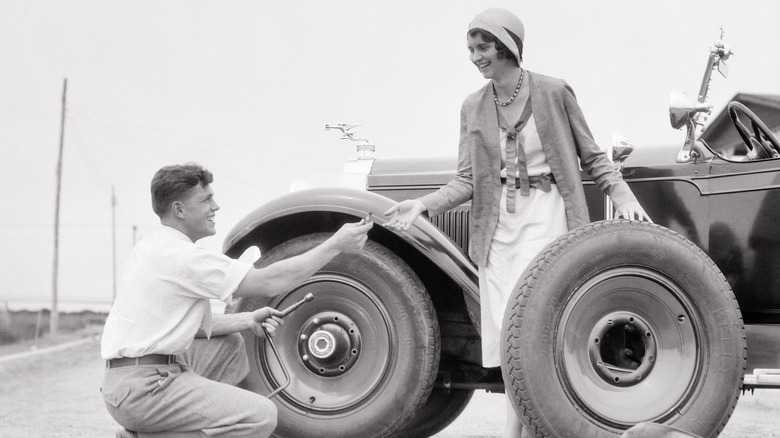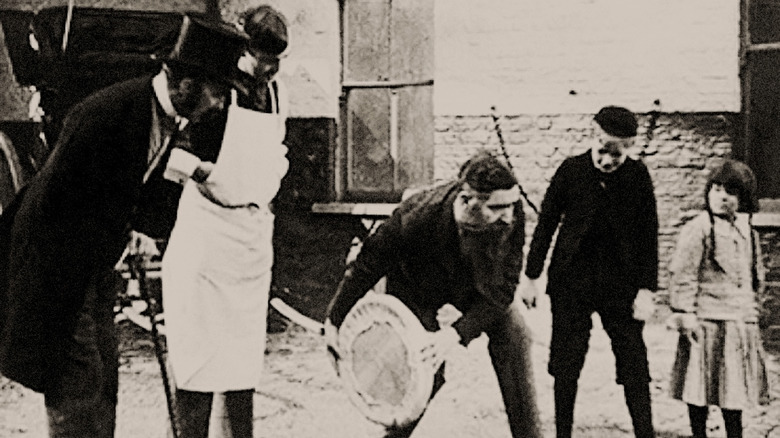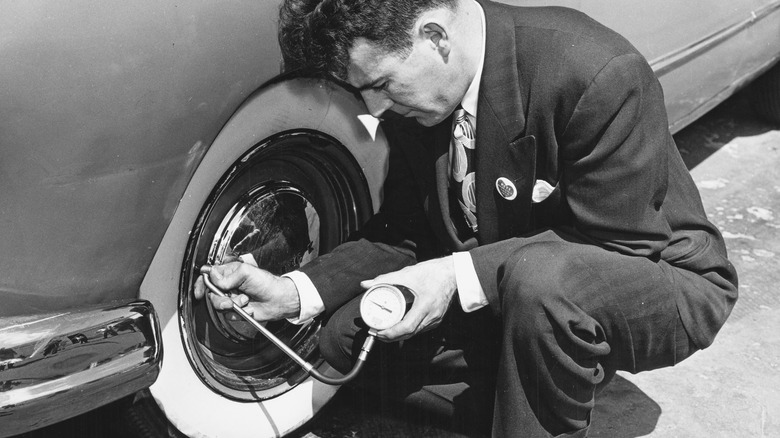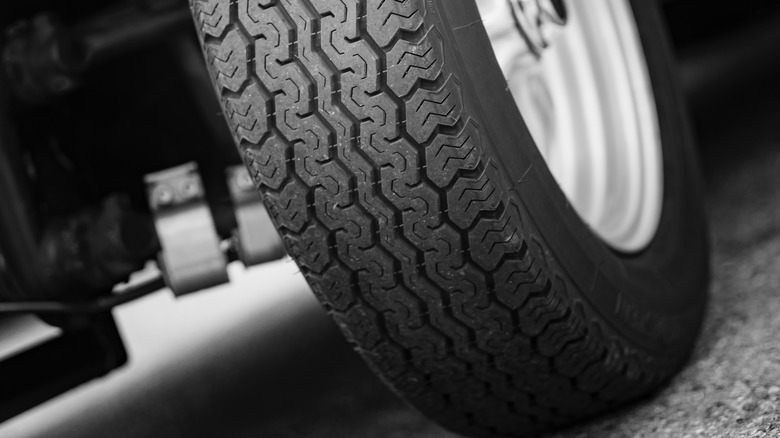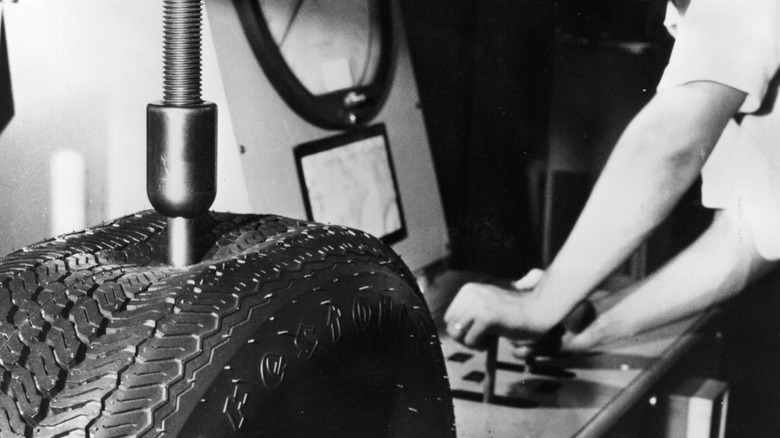The Biggest Changes Made To Car Tires Over The Last 100 Years
Car tires have silently but steadily been on a roll (pun intended), undergoing transformative changes. It's been a multi-century-long journey, marked not just by advances in design but by an evolution in materials and concepts, bringing us to the high-tech wheels of today.
In this story, we look at how and why tires have changed over time. These changes also reflect what people needed and the challenges they faced at different times. But this article isn't just about the tires. It's also about how these tire changes have made cars better and driving safer. New tire designs and materials have helped improve the driving experience. These changes have helped the environment and saved resources.
This story shows how creative and hard-working people can be when they want to make something better. The tire industry's solutions to problems — like making tires last longer, perform better, or be more eco-friendly — are both impressive and interesting. So, answering questions like "Are old car tires still safe?" and "What are radial tires?" let's take a look at the biggest changes made to car tires over the last 100 years.
Material used
Let's start around 1888. Back then, car tires were made of solid rubber. These tires were okay for old roads but not great for the newer paved ones. Then John Boyd Dunlop invented the pneumatic tire, which is filled with air — these air-filled tires made rides much smoother and quickly became popular.
During World War II, there was a shortage of rubber. So, companies used different materials like plant fibers and synthetic rubber. After the war, they went back to using regular rubber, but the use of synthetic rubber started growing. In 1931, a turning point came with DuPont's successful industrialization of synthetic rubber. This made it easier to produce more and better tires. Around the same time, the balloon tire also came out. It was a low-pressure tire with better contact with the road, making it smoother.
In the 1970s, run-flat tires were introduced. These tires could still be driven for a short distance even after getting a puncture, and they were introduced with a growing interest in materials that could offer reliability in different conditions. Today, you have tire companies making tires that are better for the planet as well. A good example is companies like Hankook developing airless tires, or NPTs (Non-Pneumatic Tires), using uni-materials that are more energy-efficient in production and recyclable.
Tubeless tires
1947 was a big year for tires — the B.F. Goodrich Company made the first tubeless tire. This was significant because it didn't need an inner tube to hold air. The transition from pneumatic to tubeless tires is a bigger event in the evolution of the tire than one would think.
The pneumatic tire, coming out of Dunlop's ingenuity, had changed transportation, allowing for smoother rides and more efficient travel. However, the introduction of tubeless tires changed the game dramatically. By eliminating the need for an inner tube, these tires offered better safety and efficiency. They combined the puncture-sealing capabilities of inner tubes while offering improved ride quality, resistance to bruising, and better air pressure retention. By 1952, Goodrich's innovation had been patented, and within three years, tubeless tires became standard on most new cars. In fact, Howard N. Hawkes of the U.S. Rubber Company described the widespread adoption of tubeless tires as "one of the most far-reaching changes ever to take place in the tire industry."
Radial tires
Around the same time tubeless tires took off in the 1950s, another new tire came out — the radial tire. This was also a tubeless tire but with a special design. It had layers of rubber cord that made it even better. Here's how the story goes: In the 1960s, Andy Bush, a Sears buyer driven by the need to give Sears a competitive edge and address the growing dissatisfaction with the existing bias-ply tires, pursued a partnership with Michelin. Despite initial rebuffs, his persistence paid off, and in 1965, Sears began offering radial tires under its Allstate brand.
Radial tires, with their unique construction where cords stretch from rim to rim, offered numerous benefits over traditional bias-ply tires. They were more durable, provided better handling, worked well at high speeds, and improved mileage. The real turning point came in the late 1960s and early 1970s. The demand for radial tires surged in the middle of increasing public awareness of tire safety and performance, coupled with the oil crisis that emphasized fuel efficiency. Major car manufacturers started to adopt radial tires, recognizing their superior qualities. By the mid-1970s, a significant proportion of cars from brands like Ford and General Motors were equipped with radials, and the rest is history.
Tread tech
People first started making tires with tread back in 1905, and it was a good idea because it made cars safer and easier to control. If you're unfamiliar with treads, it is the bumpy part on a tire. It helps the car grip the road better, especially when it's wet or icy.
As time went on, tire makers got better at designing tread. They used new materials and, more importantly, new tread patterns to make tires that could handle different weather conditions and roads. For example, they made different treads for rain, snow, and even racing. You also get all-season tires for staying safe in any weather.
Around the 1950s, they began using a special material called silica in the tread — it made tires grip the road better and saved fuel because the tires could roll more easily. Then, computers came into the picture. They helped design even better treads. These new designs were quieter and made the ride smoother. Tires got smarter, too. Some got sensors that could tell you if the tire was getting flat or if the road was slippery. Now, we're seeing even cooler stuff like airless tires that never go flat and tires that can change shape for different roads.
